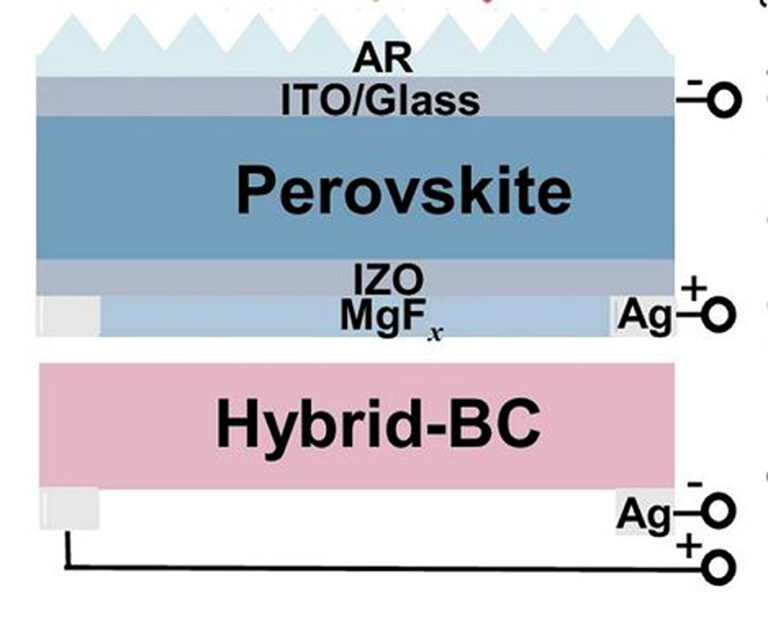Researchers in China have integrated a wide bandgap perovskite solar cell with a hybrid back contact device into a four-terminal tandem cell that achieves high efficiency and stability. Key to the strong performance was a new surface passivation strategy that the research group employed for the top cell.
Researchers from Huaqiao University in China have fabricated a four-terminal perovskite-silicon solar cell (4T) with an upper cell based on perovskite material with an energy bandgap of 1.67 and lower surface defects.
The scientists used a surface reconstruction method to remove the wide bandgap perovskite’s surface defects through wet nanopolishing. “We found that the surface reconstruction strategy can improve the perovskite/C contact60 interface, releases the residual lattice tension of the bulk perovskite film and forms a bromine-rich perovskite surface layer, which effectively suppresses the loss of interface carriers and the ion migration,” they explained,
The proposed technique was reportedly able to remove the defect-rich areas caused by inadequate crystallization on the perovskite film surface, as well as the soft iodine-rich halide components that can adjust the energy level adjustment. Nanopolishing was found to retrain the phase separation and suppress the inhomogeneity of the film’s crystallinity, which the academics say reduces the mismatch between the surface and the bulk.
They also found that nano-polishing enhances the photoluminescence (PL) intensity of the perovskite film, providing a more uniform PL distribution. “Measurements indicated a remarkable reduction in non-radiative carrier recombination in the perovskite films,” she added.
In the study “Surface reconstruction of wide bandgap perovskites enables efficient perovskite/silicon tandem solar cells”, published in communication about naturethe research group explained that they had built the 300mm x 300mm perovskite cell with a substrate made of glass and indium tin oxide (ITO), a hole transport layer (HTL) made of nickel(II) oxide (NiOx) and called phosphonic acid methyl substmodified carbazole (Me-4PACz)and a perovskite absorber.
The academics fabricated two different versions of this cell, one opaque and one semi-transparent, which achieved energy conversion efficiency of 23.67% and 21.70% respectively. Furthermore, both devices were found to maintain 80% of initial efficiency after operating at maximum power point under 1 sun illumination for 1505 hours.
The team used the semi-transparent cell to build a tandem cell integrating a 158.75 mm x 158.75 mm back contact (BC) silicon solar cell purchased from Gold Stone (Fujian) Energy Company Limited with an efficiency of 12.7% as the bottom device, with the large area perovskite cell being placed on top of the hybrid BC-silicon solar cell as a filter.
Tested under standard lighting conditions, the tandem cell achieved an energy conversion efficiency of 33.10%.
“This work shows that the surface passivation of perovskite films with a high defect density, such as wide bandgap perovskite films, requires a preliminary step to reduce the defect density in the initial films, indicating directions for designing surface engineering strategies to improve performance to further improve. of perovskite solar cells with a wide band gap,” the scientists said.
This content is copyrighted and may not be reused. If you would like to collaborate with us and reuse some of our content, please contact: editors@pv-magazine.com.


